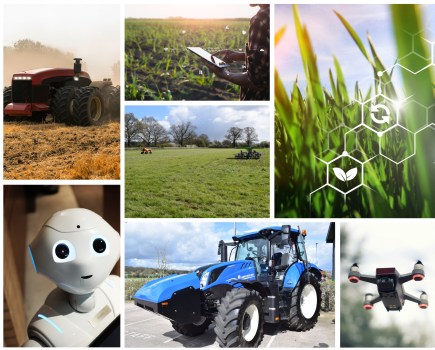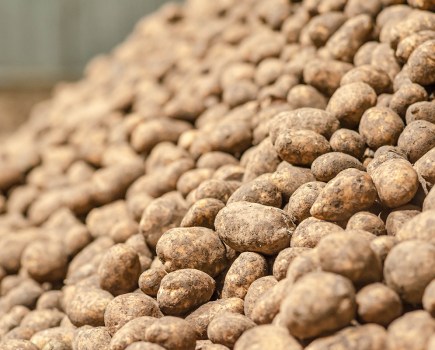Gene editing is a hot topic, with some claiming it could bring an end to some of the biggest problems facing agriculture. But with legal constraints what is the future of the technology and what could it mean for the agricultural industry? CPM joins CRISPRCon to find out.
Plant breeding has contributed greatly to improving farming systems all over the world.”
By Ruth Wills
A glimpse into the possible future of food production was gained at a recent CRISPR gene editing Conference in the Netherlands. So what does the future of gene editing look like and how might it affect the agricultural landscape? CPM reports.
Gene editing could bring solutions to some of the biggest issues facing agriculture, from disease resistance to reducing pesticide usage as well as potentially ending food shortages. But concerns from some over the technology and EU legislation may hold up its progress.

There are regulatory challenges around using CRISPR in the EU
These were some of the views aired at the CRISPR gene editing Conference, Wageningen University, Netherlands in June. CRISPR technology can be used to edit, move or delete a gene in a plant’s DNA to achieve a required characteristic like disease or drought resistance. Unlike genetic modification (GM), it can create an improved plant without using DNA from another species: It’s possible to deliver plants with beneficial mutations that could have developed in nature or through conventional breeding, but in a faster, more efficient way.
However, current EU legislation prevents gene-edited plants or animals from entering the food chain because they fall under the GM ban. This came as quite a shock to scientists working with CRISPR, given the technology is so different, they say.
In the UK, scientists have been working on gene-edited plants which are now ready to be trialled in the field but they cannot justify the expensive licenses required to release them. Therefore, research institutions, universities, plant breeders and many other organisations are lobbying for a clear way forward for the use of the technology, and hope that Europe can bring the regulations in line with other international practices.
Speaking at the conference, Patience Koku, a farmer from Replenish Farms in Nigeria said: “The conversation is totally different on the other side of the world. Africa cannot feed itself – people talk about food waste, we are talking about food shortage; a lot of people go to sleep hungry. When you think about the possible solutions to the problems you have to look at them from a world perspective.
“We can’t farm organically in Africa so we need to feed people using less resources. What I see 10 years from now is a world where CRISPR and all the techniques for gene editing are available and people have a chance to live.”
And the benefits of gene editing could improve small scale farming too. “Smallholder farmers in Africa and Asia are weeding by hand – they grow only small fields because they can work those by hand. If you have a herbicide-tolerant crop they could plant larger fields and have the option to grow more food.”
From Patience’s perspective, the real questions should be: “Is it safe? How do we regulate it for misuse? Then how do we get it to the people who need it?”
However, not everyone is so positive about the technology and there were debates over its risks. “I feel like I’m in a time warp where it’s 20 years ago and the same promises were being made for GM,” said Tom Wakeford at the ETC Group, which monitors the impact of emerging technologies on biodiversity, agriculture and human rights. “Golden rice was just a couple of years away from stopping blindness in hundreds of thousands of children. We clearly need good regulation and assessment otherwise gene editing will repeat the same problems as the past.”
Tom prefers participatory plant breeding through agro-ecology movements; these involve breeders, farmers and end users. “Farmer-to-farmer learning, with scientists coming in (is the way forward). If we don’t learn the mistakes from history we are condemned to repeat them.”
However, Niels Louwaars at Plantum – the Dutch association for plant breeding – reckoned the future of gene editing was positive. “We see farmers in Europe under tremendous pressure; demands are increasing at a quick pace. Plant breeding has contributed greatly to improving farming systems all over the world,” he said.
“The small ornamental breeding companies are really looking at what we can do with this technology. Because of the pressure of limited chemical crop protection there’s a lot of demand for more resistant varieties. Also, conventional breeding is very slow and would take 15 or 20 years longer.”
If plant breeding is to contribute to the next level of farming operations in Europe then speeding up the process is very important – and CRISPR can help that, he added.
In terms of the products which may end up on our supermarket shelves, the main things that consumers want are; tasty, healthy, safe and affordable food, according to Leon Mol from Dutch food retailer Ahold Delhaize “People are looking differently at their food, they buy based on whether they trust the products. Ethics and sustainability do also play a part– whether the technology is CRISPR or anything else, it’s not one thing – it’s the whole package,” he added.
“We are confronted with groups that say ‘your footprint is too high’, CRISPR can alter it. ‘Your pesticides use is too high’, CRISPR can alter it. At the same time people are asked to have a judgement of this technology – we can’t do that because we do not know what we’re judging.”
There are different perceptions of animal welfare and food safety depending on where you are in the world; there is no one size fits all, said Ahold. “We need to tell the customer what they are buying, be honest about it and ready to tell the story.”
Gluten free wheat
Coeliac disease is an auto-immune reaction to gluten which affects 1-2% of the human population – it is far more common now than 50 years ago. Therefore, could gene editing be a viable solution to this disease?
“No drugs have been commercialised for long-term treatment, therefore a gluten-free diet is the only solution for the moment,” said Aurelie Jouanin at Wageningen University.
The team decided to use CRISPR Cas9 to generate wheat with hypoimmunogenic content: Other conventional breeding techniques did not work because of the sheer number of gene copies and complexity. So far the group have been able to mutate the wheat strains to lack specific gluten epitopes.
However, because of the expensive GM regulation tests and labelling where GM is banned, it is unlikely to be seen on EU shelves any time soon.
Chicory project
The CHIC project is a European-funded project to develop chicory varieties with additional health benefits and increase the diversity and sustainability agriculture.
The €7.3m (£6.5m) project is designed to solve the challenges faced by European society through research and development, although its practical application may hang in the balance given that CRISPR is treated as GM in the EU.
Chicory is mainly grown in Northern France, Belgium and the Netherlands, with around 20,000ha produced for salad use. “We are working on a different variety, not for the leaves but the roots to be harvested,” said Katarina Cankar at Wageningen University.
The roots are filled with inulin, which is made of fructose sugars. These can act as prebiotics which promote the growth of good gut bacteria and stimulate the human immune system. “At the moment inulin is used in products to reduce sugar and fat, as dietary fibre, and a low-calorie sweetener,” explained Katarina. “You can find it in bakery, breakfast and many dairy products. In our project we are working with designing chicory varieties which can accumulate high amounts.”
Chicory roots are also filled with terpenes; small bio-active molecules which naturally protect the plant against fungi and nematodes. “The chicory is very resilient and requires very little pesticides,” she said. “We can use CRISPR technology to produce those bioactives in the chicory roots, and all these properties are very interesting for human use. We are looking to see if we can use the terpenes against human pathogens and for a wide spectrum of medicinal properties, with anti-inflammatory and anti-cancer properties.”




